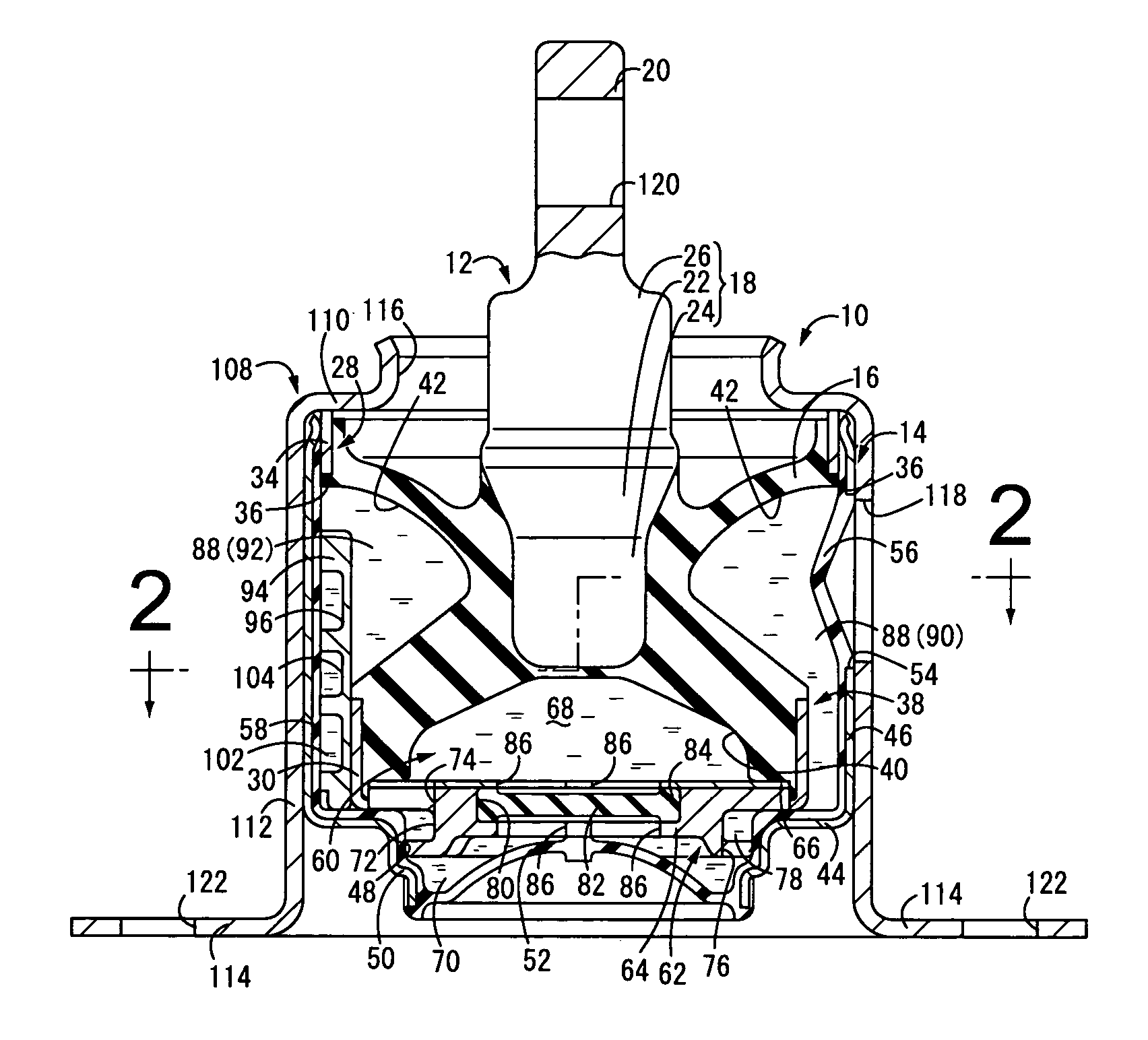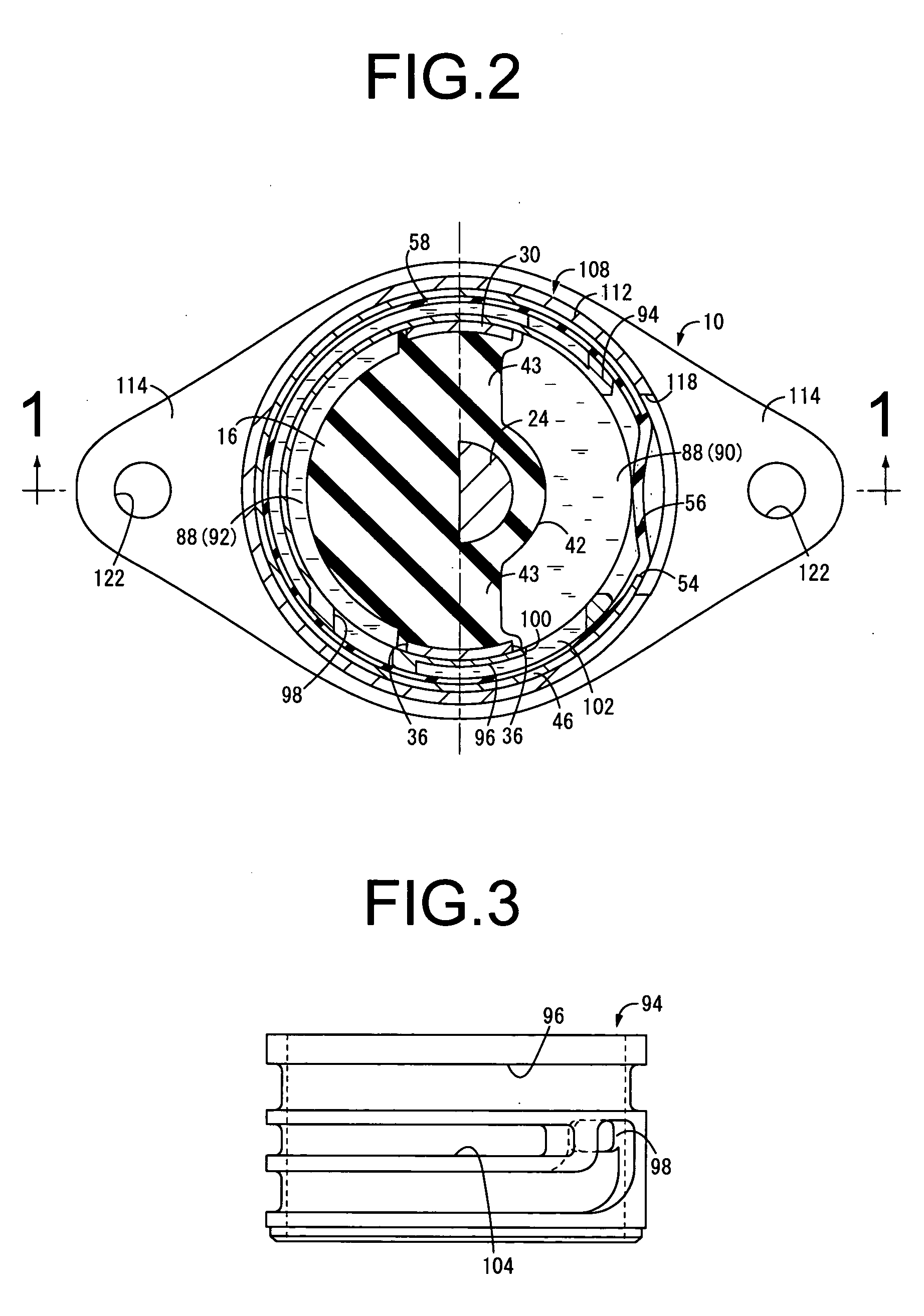Fluid-filled vibration damping device
a technology of vibration damping and flue-filled filling, which is applied in the direction of shock absorbers, machine supports, mechanical equipment, etc., can solve the problems of narrow frequency range in which damping effects could be obtained, difficulty in tuning vibration properties, and sometimes needed damping effects of damping devices, etc., to achieve greater spring ratio, greater degree of freedom, and greater rubber volum
- Summary
- Abstract
- Description
- Claims
- Application Information
AI Technical Summary
Benefits of technology
Problems solved by technology
Method used
Image
Examples
Embodiment Construction
[0036]FIGS. 1 and 2 illustrate an automobile engine mount 10 in a first embodiment of the invention. This engine mount 10 has a construction wherein a metallic first mounting member 12 and a metallic second mounting member 14 are disposed apart, and a rubber elastic body 16 elastically connects the first mounting member 12 and second mounting member 14, with the first mounting member 12 attached to an automobile power unit and the second mounting member 14 attached to an automobile body by an attachment bracket 108, whereby the power unit is supported in a vibration-damped manner relative to the body. The engine mount 10 in this embodiment is mounted with the vertical direction in FIG. 1 being in a generally perpendicular vertical direction. As a rule, in the following description, the vertical direction refers to the vertical direction in FIG. 1.
[0037] More specifically, the first mounting member 12 comprises a support shaft 18 in the shape of a solid, round rod of small diameter,...
PUM
 Login to View More
Login to View More Abstract
Description
Claims
Application Information
 Login to View More
Login to View More - R&D
- Intellectual Property
- Life Sciences
- Materials
- Tech Scout
- Unparalleled Data Quality
- Higher Quality Content
- 60% Fewer Hallucinations
Browse by: Latest US Patents, China's latest patents, Technical Efficacy Thesaurus, Application Domain, Technology Topic, Popular Technical Reports.
© 2025 PatSnap. All rights reserved.Legal|Privacy policy|Modern Slavery Act Transparency Statement|Sitemap|About US| Contact US: help@patsnap.com



